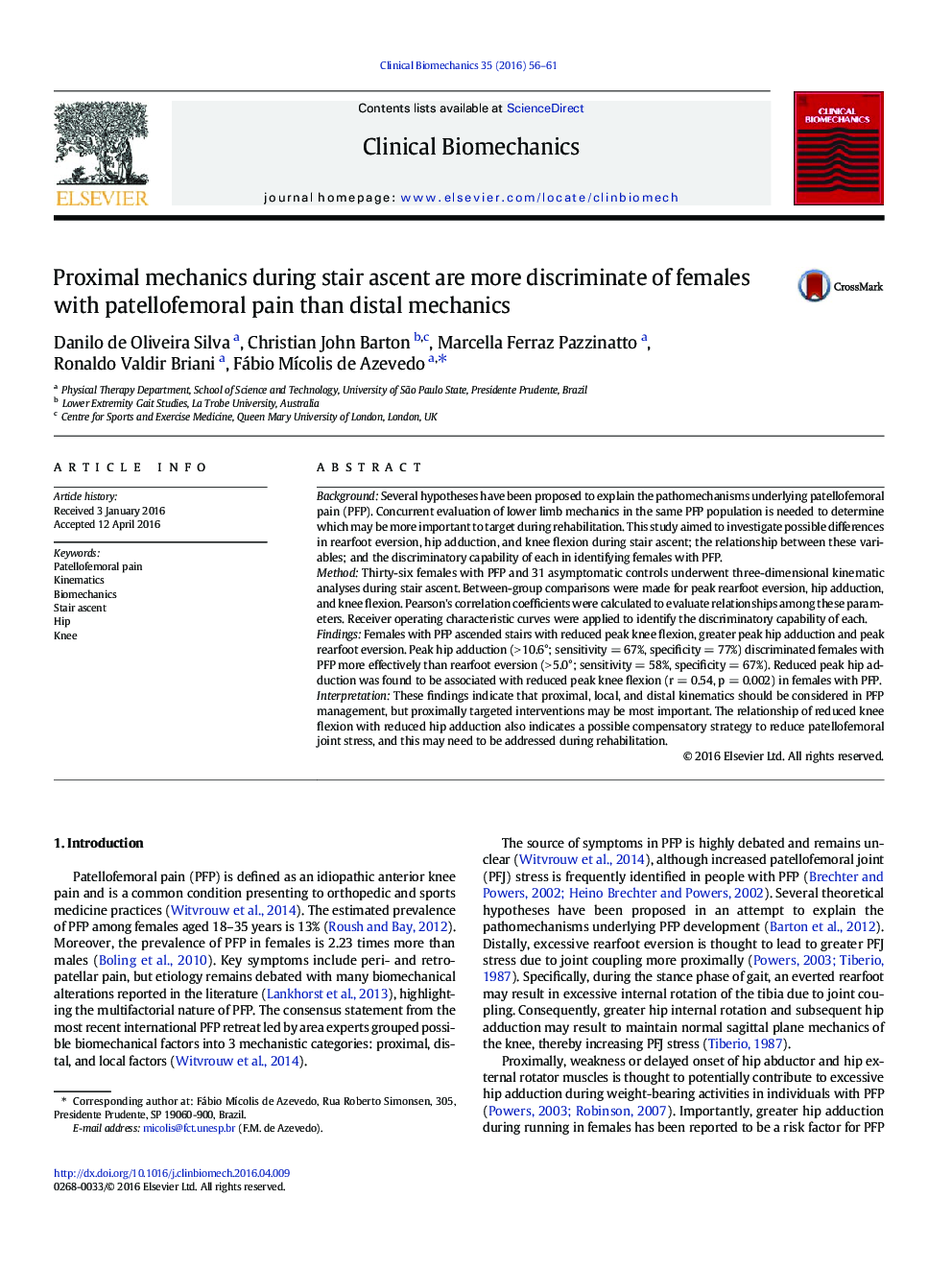| Article ID | Journal | Published Year | Pages | File Type |
|---|---|---|---|---|
| 4050109 | Clinical Biomechanics | 2016 | 6 Pages |
•Greater peak hip adduction and rearfoot eversion exist in patellofemoral pain during stair ascent.•Hip adduction possesses the greatest capability to identify patellofemoral pain.•Reduced hip adduction and reduced knee flexion are associated to avoid knee valgus collapse.•Proximally targeted interventions may be most important in patellofemoral pain management.
BackgroundSeveral hypotheses have been proposed to explain the pathomechanisms underlying patellofemoral pain (PFP). Concurrent evaluation of lower limb mechanics in the same PFP population is needed to determine which may be more important to target during rehabilitation. This study aimed to investigate possible differences in rearfoot eversion, hip adduction, and knee flexion during stair ascent; the relationship between these variables; and the discriminatory capability of each in identifying females with PFP.MethodThirty-six females with PFP and 31 asymptomatic controls underwent three-dimensional kinematic analyses during stair ascent. Between-group comparisons were made for peak rearfoot eversion, hip adduction, and knee flexion. Pearson's correlation coefficients were calculated to evaluate relationships among these parameters. Receiver operating characteristic curves were applied to identify the discriminatory capability of each.FindingsFemales with PFP ascended stairs with reduced peak knee flexion, greater peak hip adduction and peak rearfoot eversion. Peak hip adduction (> 10.6°; sensitivity = 67%, specificity = 77%) discriminated females with PFP more effectively than rearfoot eversion (> 5.0°; sensitivity = 58%, specificity = 67%). Reduced peak hip adduction was found to be associated with reduced peak knee flexion (r = 0.54, p = 0.002) in females with PFP.InterpretationThese findings indicate that proximal, local, and distal kinematics should be considered in PFP management, but proximally targeted interventions may be most important. The relationship of reduced knee flexion with reduced hip adduction also indicates a possible compensatory strategy to reduce patellofemoral joint stress, and this may need to be addressed during rehabilitation.
